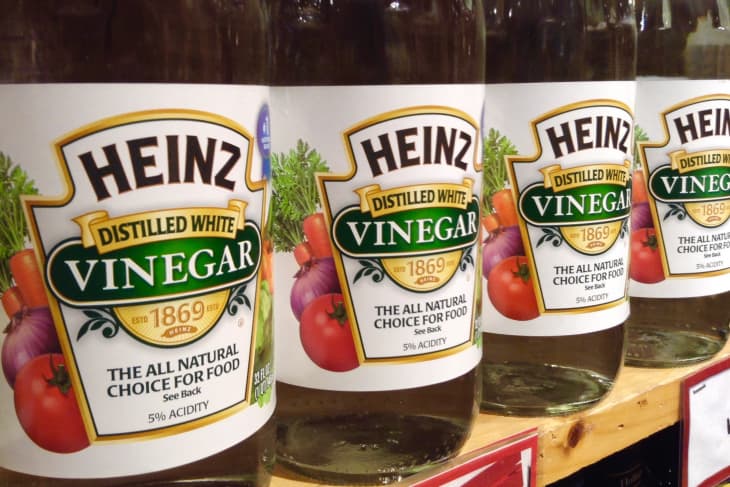5 Things to Know About Cleaning with Vinegar
It’s natural! It zaps stains! It’s cheap! There’s a lot to love about vinegar as a cleaning product. However, it’s not the perfect remedy for every cleaning job — or every cleaning person (oh, the stink!). Learn how to make it work for you, from Becky Rapinchuk, author of The Organically Clean Home and founder of the blog, Clean Mama.
1. The regular white stuff is all you need.
The key ingredient in vinegar is acetic acid, a natural germ-killer against some common bacteria. The kind you buy for eating is about 5 percent, while cleaning vinegar (yes, it’s a thing, and available at grocery and home-improvement stores) is between 6 and 7 percent.
That said, in most cleaning cases you’ll be diluting the stuff anyway, so unless you need to dissolve some serious soap scum or disinfect a cutting board (which takes the full-strength, high-test stuff), you’re fine with the standard white vinegar from the salad dressing aisle.
2. You can mask the smell.
“My favorite all-purpose cleaner with vinegar is 1 1/4 cups water, 1/2 cup white vinegar, and about 10 drops of essential oil — lemon and clove are my favorite,” says Rapinchuk. “Pour it into a spray bottle and use it to clean just about any hard surface.” The essential oil isn’t, well, essential, but it will help cut that classic vinegar-y smell that irks some people.
Make a good-smelling vinegar spray: An Infused Vinegar Cleaning Spray That Actually Smells Great
3. It’s not perfect for everything.
The acidity makes it a no-no for natural stone surfaces, such as counters or outdoor patios. “Vinegar should never be used on marble, granite, quartz, or travertine,” Rapinchuk says. Over time the vinegar will etch the stone and ruin your finish.
4. But it is pretty versatile.
Some of Rapinchuk’s favorite uses — aside from general surface cleaning in the kitchen — include window cleaner, hard water spot remover in the sink or tub, stainless steel cleaner, fabric softener (add a half-cup to the rinse water), and washing machine cleaner (run a hot-temp empty load of a front loader with a cup of vinegar, or fill a top-loader with hot water and four cups of vinegar and let sit an hour before finishing the load).
She even uses a very diluted solution (a half-cup vinegar to one gallon of water) on her finished hardwood floors. And you can use it to de-scale your coffee maker, too.
5. Vinegar can clean food, too!
For a DIY produce wash, Raponchuk makes a concoction of a half-cup apple cider vinegar (it’s naturally less stinky than the white kind), a half-cup lemon juice, and a half-cup water in a spray bottle. Spray your fruits and veggies and give ’em a rub before rinsing well.
Note: Apple cider vinegar can be used for all those general cleaning tasks in place of white vinegar if you prefer the smell — just don’t use it on or near surfaces that may become stained by its brown hue.
